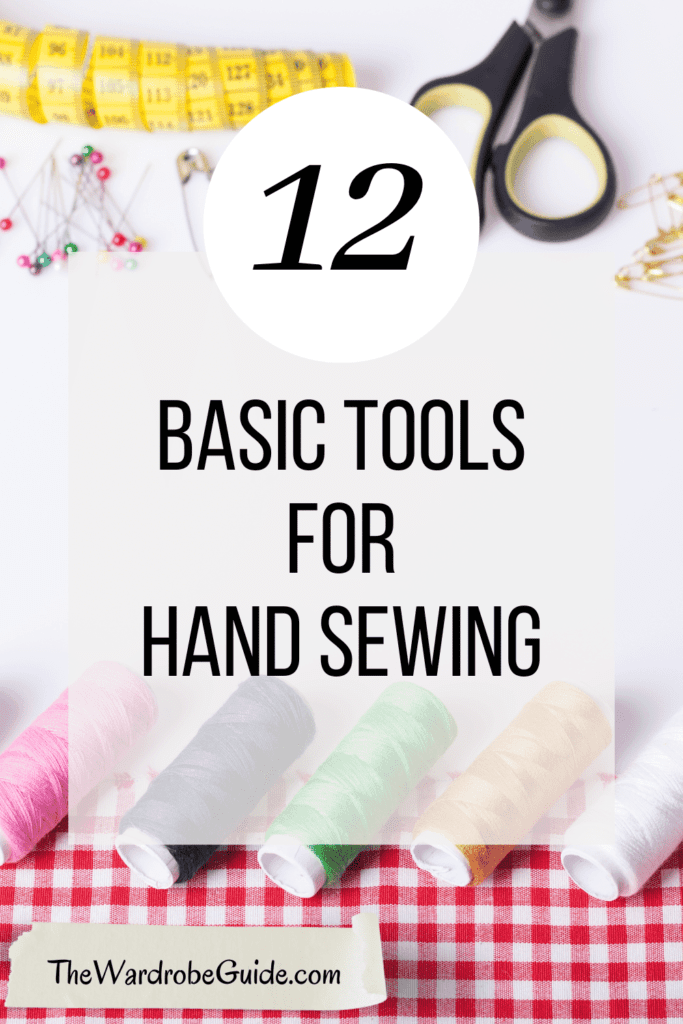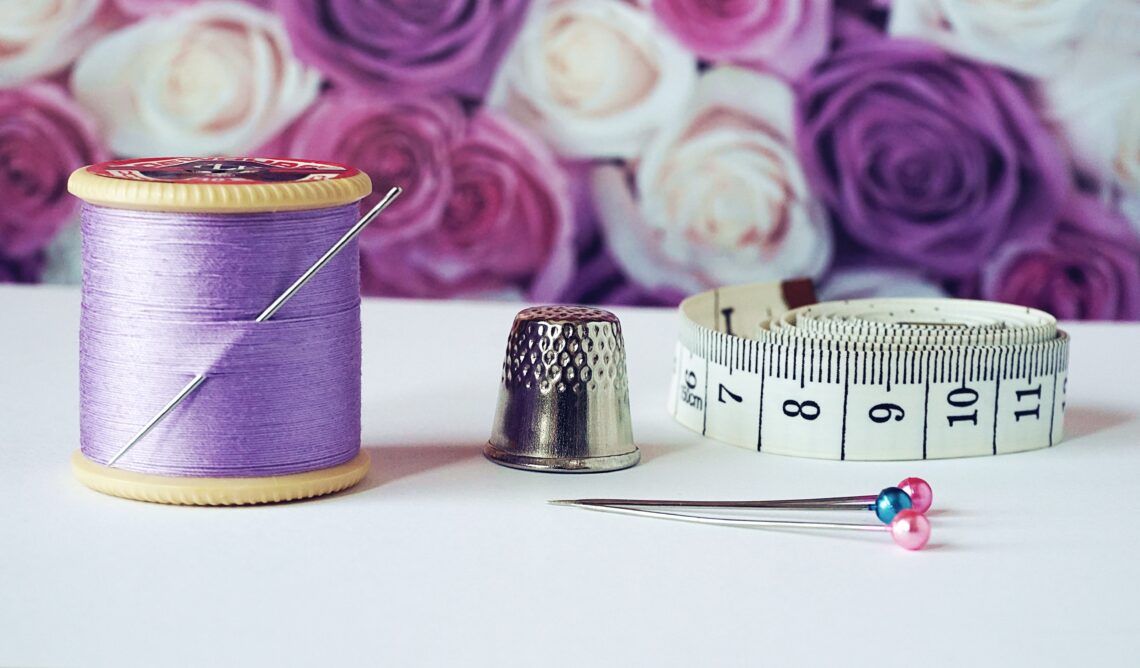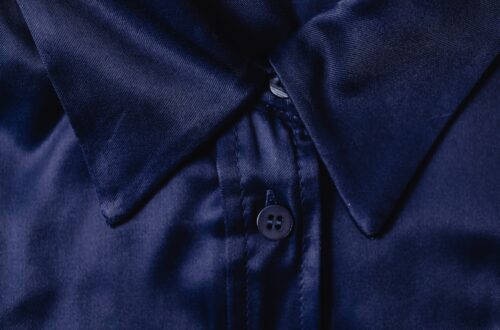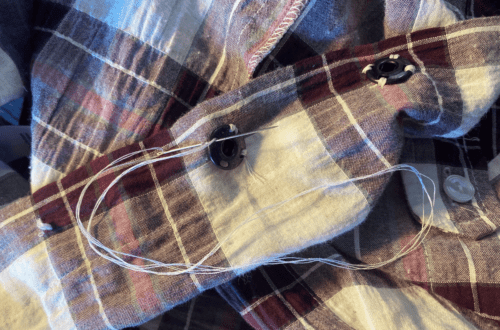So you’ve decided that you want (or maybe, more truthfully, need) to hand-sew something. Here are some of the most essential basic hand-sewing tools that you’ll want to gather before you get to work. We also included some optional notions as well that you may want with you, depending on the project.
Why is Basic Hand Sewing Important?
Some might argue that you don’t need to know how to stitch to be a dresser. However, we argue that you should know how to do at least some basic hand stitching to be a great dresser. We assume that if you are currently reading this at The Wardrobe Guide, you are interested in being a great dresser.
While it’s true at the Broadway level, dressers aren’t typically responsible for any big sewing projects, you never know what situation you could find yourself in over the course of a show. For example, your leading lady’s zipper might break, or you might lay out a pair of pants for your leading man to find that the button has fallen off. During tech, Broadway dressers are also generally responsible for stitching in pit pads and labels. In any scenario, it could be up to you to save the day with your hand-stitching powers.
The following descriptions are a very basic intro to the tools that are most important for hand sewing. Click on the headers for a more in-depth look at each tool! (Coming soon!)
Important Basic Tools for Hand Sewing
Hand Sewing Needles
Hand-sewing needles are probably the most important tool for your hand-sewing project, maybe next to the thread. They are different from machine sewing needles because the eye (the hole for the thread to go through) is towards the back end of the needle. On a sewing machine needle, the eye is on the other end (near the sharp part of the needle).
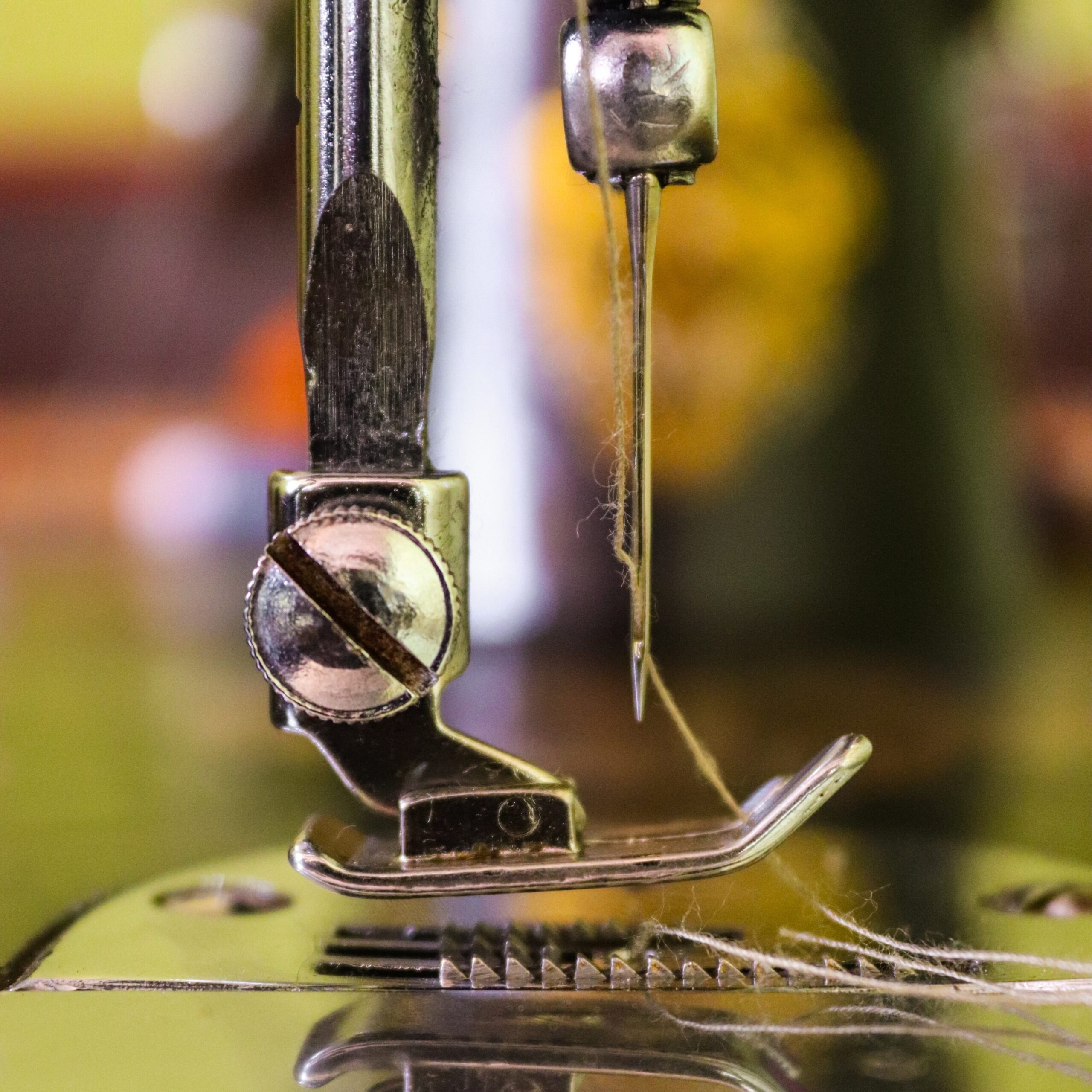
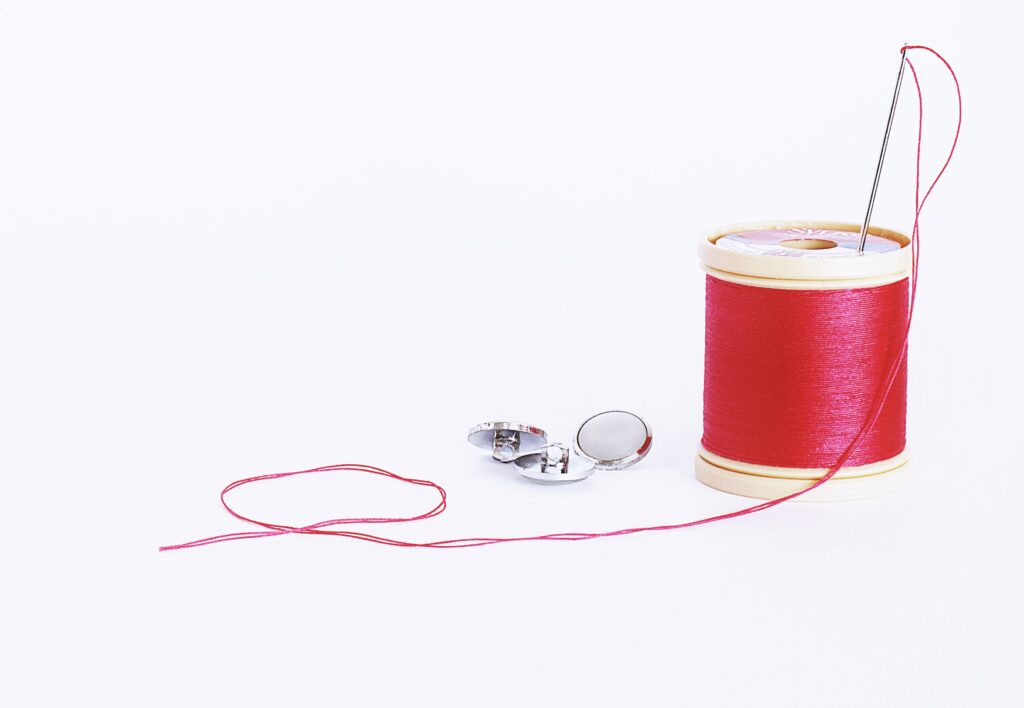
There are many different types of hand-sewing needles that we will talk about more in-depth later. They come in all different lengths and thicknesses, depending on what material or craft they are made for. It is important to use the correct type of hand needle, especially when hand sewing something special like leather or beads. However, at this time, we are going to focus on basic hand stitching, such as sewing a classic shirt button onto a cotton dress shirt.
Thread
Thread is the second most important tool for your hand-sewing experience. Such as with hand sewing needles, the thread also comes in a variety of types. More on the types of thread and what they are used for later. In the meantime, we are going to focus on the most basic thread.
Thread comes in hundreds of different shades, so depending on where you are stitching, you will want to match the color of the thread you use to the color of the fabric you are stitching on. When it comes to emergency sewing, however, having simply one black and one white spool nearby will be more than enough. As you can see in the pictures, my preferred thread brand is Gutterman.
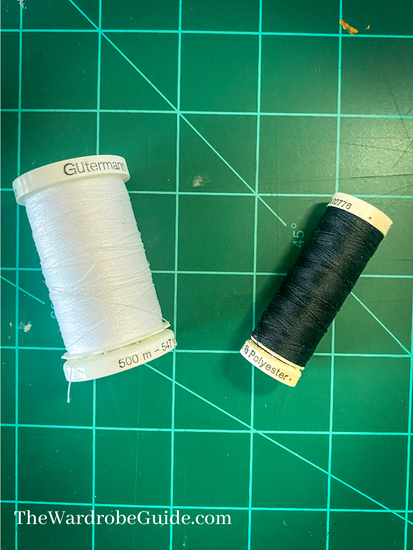
Scissors
There are multiple different kinds of scissors used for sewing and in wardrobe. The two most important scissors for basic hand stitching are snips and fabric scissors.
Protip: Tools tend to “mysteriously disappear” backstage. If you are bringing your own tools to work, mark them with nail polish, washi tape, or sharpie so you (and everyone else) know they are yours!
– The Wardrobe Guide
Snips
Snips are small (typically pocket-sized) scissors.
They have a wide variety of purposes. Because of this, snips are one of the tools that every dresser definitely has in their apron. For hand sewing, however, they are most helpful for cutting threads. This means you’ll use them a lot between cutting a new piece of thread off the spool and cutting your thread after you tie off the end of your stitching.
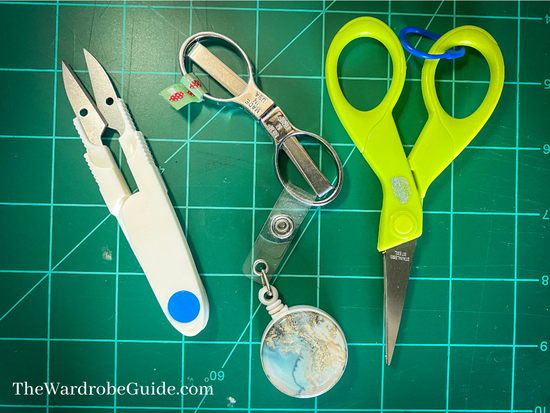
Fabric Scissors
Fabric scissors are a large shear. They are extremely sharp, and famously should only be used for fabric (no paper!) to maintain their sharpness and ability to, you know…cut fabric.
They typically aren’t needed for the most basic hand sewing such as stitching on a button or a label. However, they are important enough that I felt like they belonged on this list. Some people prefer exclusively using their fabric scissors, and not using snips at all. Some people don’t like dulling their fabric scissors by cutting threads.
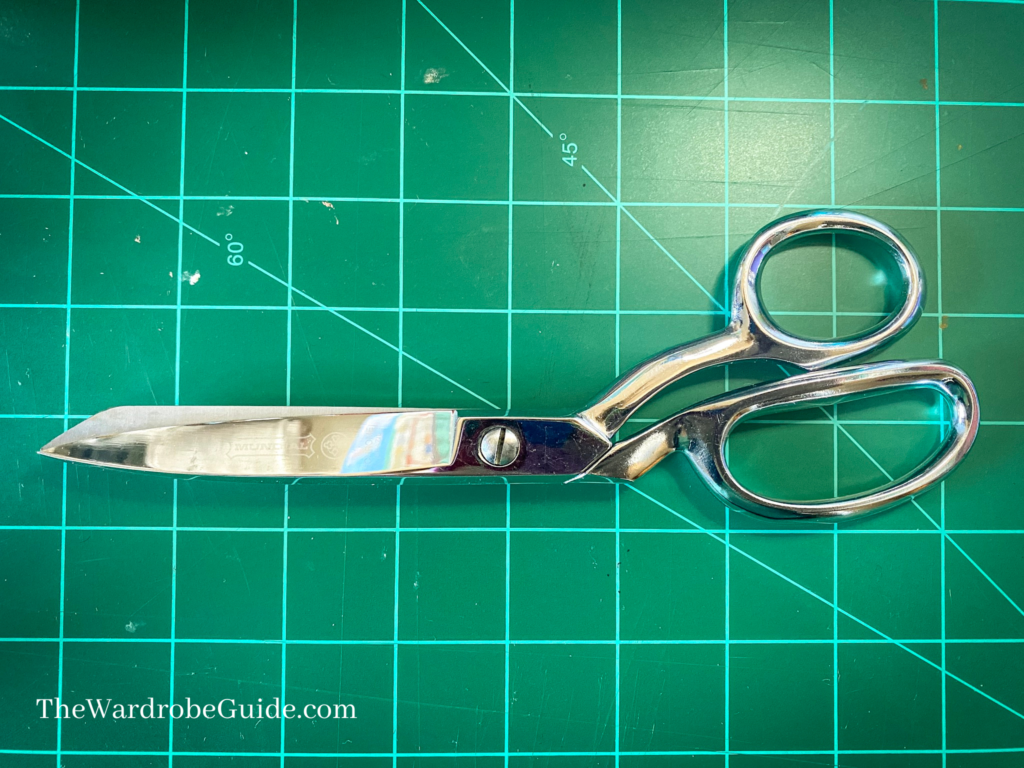
Seam Ripper
Probably the third most important tool for your hand-stitching project. Everyone makes mistakes- even stitchers who have been stitching for years. A seam ripper is great for taking out any mistakes that you might make.
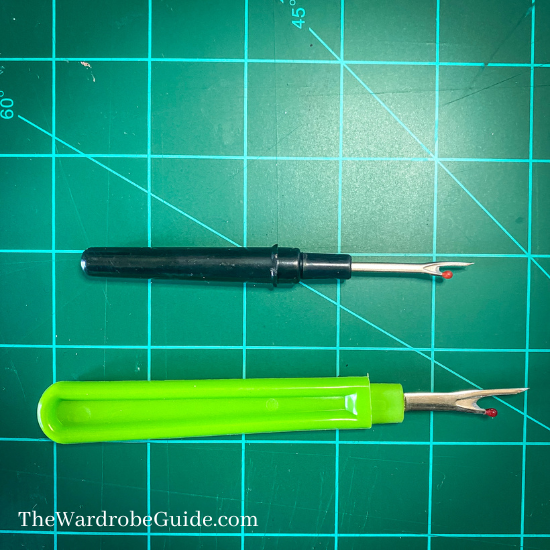
Pins
Pins hold your stitching pieces together. Either for you to sew together, or for someone (such as a designer) to communicate an alteration. There are two basic kinds of pins you will come across while hand stitching. These basic pins are Straight Pins and Safety Pins.
Straight Pins
In theatrical sewing, straight pins are typically used by the stitcher and are used during the stitching process. (In bridal sewing, it is typical to use only straight pins– even in fittings). There are many different varieties of straight pins. From various lengths to different “balls” on the top; it is typically up to the stitcher’s preference as to what they want to use.
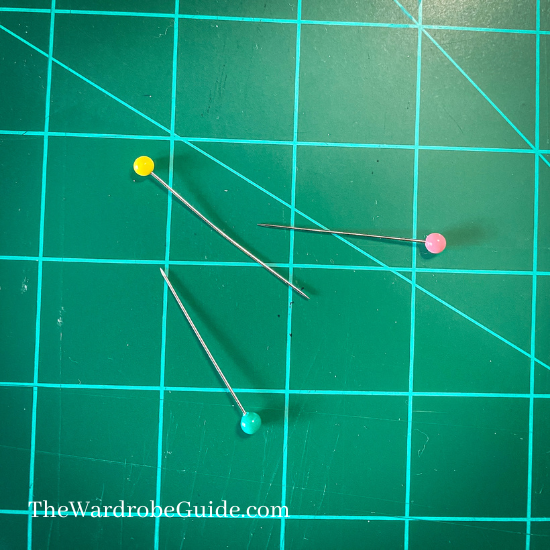
Safety Pins
In theatre sewing, the safety pin is the ultimate fitting tool. The designer will typically use safety pins in their fittings to mark the alterations they want, and the stitcher will use these pins to pull their measurements from. Safety pins are another tool that every dresser will always have with them, as they are the perfect tool to use for emergencies during changes. There are many different sizes of safety pins, and most wardrobe rooms will have many sizes for many different sizes of pinning.
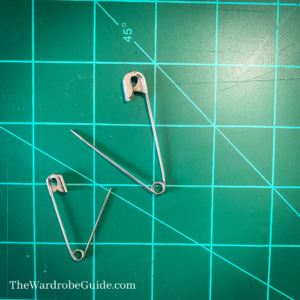
Optional Tools for Basic Hand Stitching
These tools are not mandatory for a hand-sewing project, but they are fairly basic tools that are definitely helpful for anyone who is hand-sewing. Especially if you are trying to create your own stitching kit to bring with you to jobs full of your personal favorite tools.
Pin Cushion
Pins are so small and easy to lose, having a pin cushion handy helps keep track of them– especially when there are costume pieces all over your table. I typically use pin cushions for my hand-sewing needles, to keep track of my favorite ones. (Yes you will have favorite needles as a stitcher.)
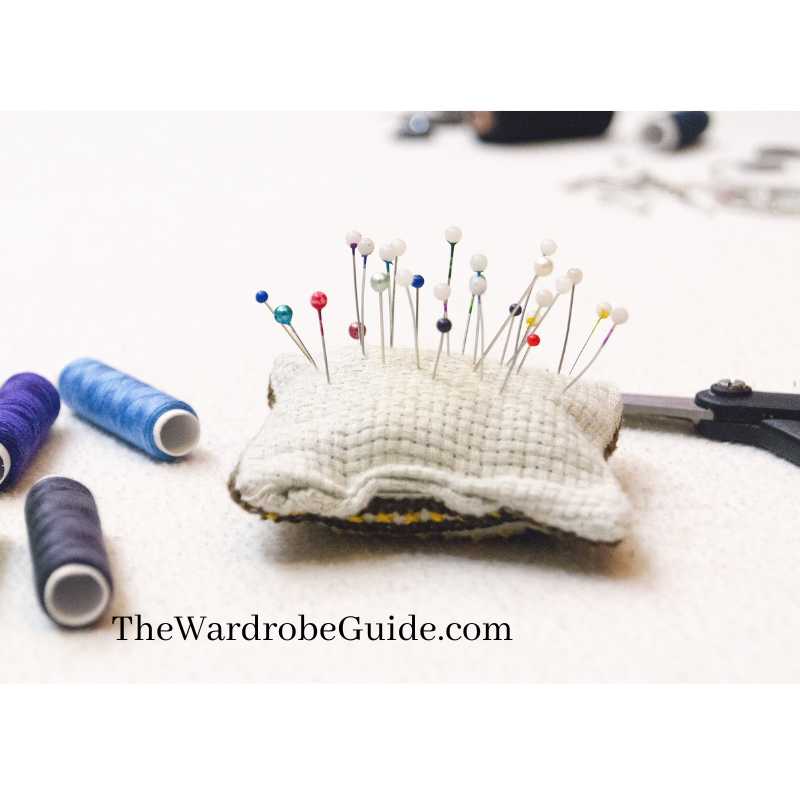
Magnetic pin dish
I typically use a magnetic pin dish to hold my straight pins. These dishes make it easy to add straight pins back to while stitching (just toss it in!). They also make straight pin cleanup a lot easier at the end of a project. That being said, if you aren’t doing big stitching projects, you can probably get away with a couple of straight pins in your pin cushion with your needles.
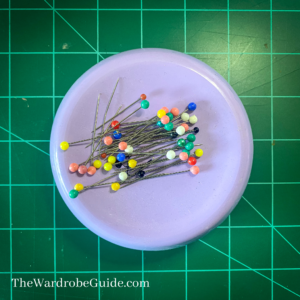
Needle Threader
If you have a hard time seeing the eye of the needle, a needle threader might be just what you need. You can insert them through the eye of the needle to pull the thread back through. You might notice that your pack of hand needles includes a free needle threader if you want to try it out!
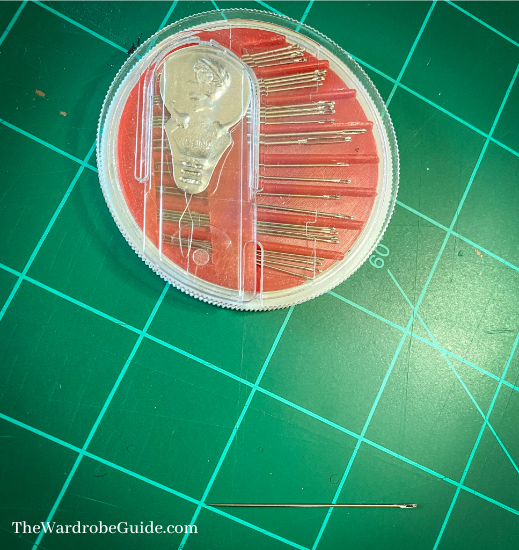
Thimble
A thimble is another optional tool that you might want on hand just in case. This is a little piece of metal, leather, or silicone that you can slip onto your finger while sewing. You can use the thimble as a “finger guard” when pushing your needle through tough fabric so that the needle doesn’t poke into your finger. When you need a thimble, you will be extremely glad you have one. A thimble is another tool that most people have a preference as to which type they like the best. (I personally prefer the leather kind, as I find it stays on my finger easier and allows my fingers to have more flexibility!)
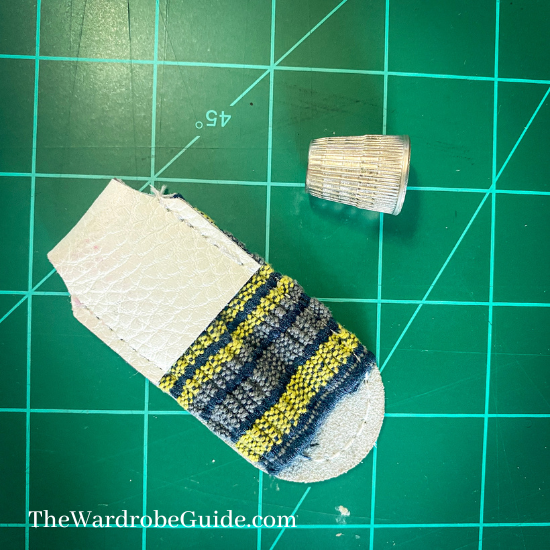
Thread Wax/ Thread Conditioner
We aren’t technically including this in the list of necessities, because you can definitely hand-sew without it. However, this is a necessity for us whenever we are hand sewing. After threading your needle, running the thread through wax or conditioner really help the thread not break or tangle. This will really decrease your frustration with whatever you are hand-sewing, and make the process a lot faster.
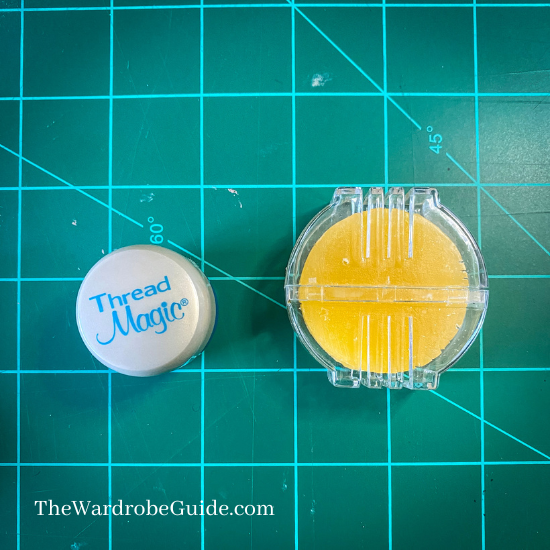
What are your must-have hand-stitching tools? Are there any brands of the tools listed above that you love? Let us know in the comments!

